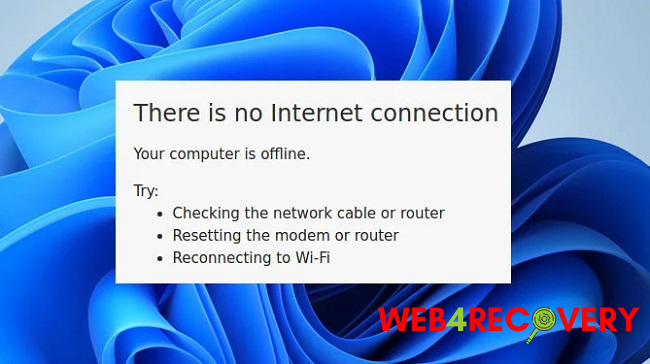Internet connectivity issues can be frustrating, especially when your computer won’t connect to the internet, but other devices will.
This article aims to guide you through troubleshooting such issues on Windows 10 and the new Windows 11. We’ll explore the potential causes of the problem and provide step-by-step instructions to help you regain your internet connection.

Understanding the Problem: No Internet Connection
A computer may fail to connect to the internet for various reasons, including hardware problems, software issues, or network configurations. Understanding the possible causes is the first step to resolving the problem.
Some common reasons your computer may fail to connect to the internet while other devices can include:
- Faulty Network Adapter: The network adapter in your computer may be faulty or improperly configured.
- Outdated Network Drivers: Outdated network drivers can also prevent a computer from accessing the internet.
- Incorrect Network Configuration: Sometimes, your network configuration or settings may not be correctly set up.
- Interference from Security Software: In some cases, security software or firewall settings can interfere with internet connectivity.
How to Fix No Internet Connection in Windows 10 and Windows 11
Here’s a step-by-step guide to troubleshoot and fix the internet connection issue on your computer:
- Check Your Network Adapter: Your network adapter allows your computer to connect with the internet. Check if it’s working properly. You can do this by going to ‘Device Manager’, then ‘Network Adapters’. If you see a yellow triangle with an exclamation mark, it indicates a problem with the adapter.
- Update Network Drivers: Outdated network drivers can cause connectivity issues. Update them by going to ‘Device Manager’, then ‘Network Adapters’. Right-click on your network adapter and select ‘Update driver’.
- Reset Network Settings: Resetting your network settings can resolve any configuration issues. Go to ‘Settings’, then ‘Network & Internet’, and then ‘Reset Network’.
- Disable Security Software Temporarily: If you suspect that your security software might be causing the issue, try disabling it temporarily to see if this resolves the problem. Remember to re-enable it as soon as you’ve checked, to keep your computer protected.
- Use Windows Network Troubleshooter: Windows 10 and Windows 11 have built-in troubleshooters that can help diagnose and solve network problems. To run the network troubleshooter, go to ‘Settings’, then ‘Update & Security’, then ‘Troubleshoot’, and finally ‘Internet Connections’.
- Contact Your Internet Service Provider (ISP): If none of the above steps work, there might be an issue with your ISP. Contact them for assistance.
Conclusion
Losing internet connectivity on your computer can be disruptive, but understanding potential causes and knowing how to address them can quickly get you back online.
This guide provides a solid foundation for troubleshooting connectivity issues on Windows 10 and Windows 11, ensuring a smooth and reliable internet experience.

















